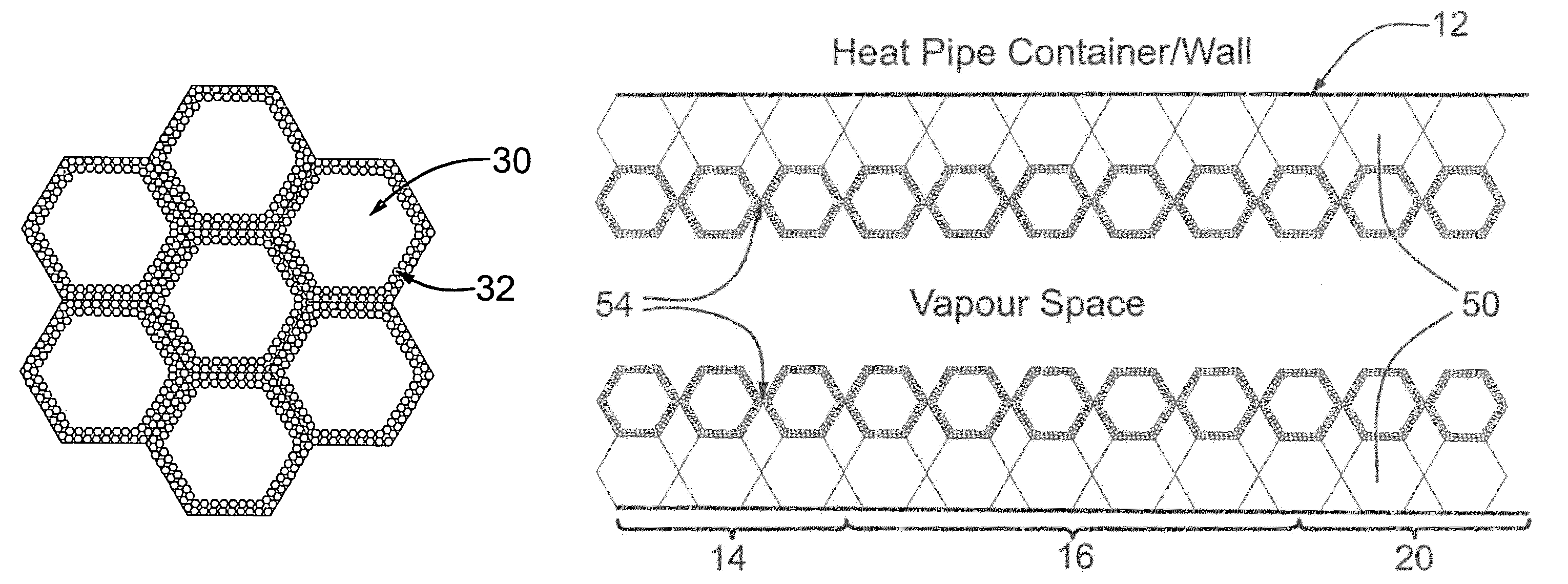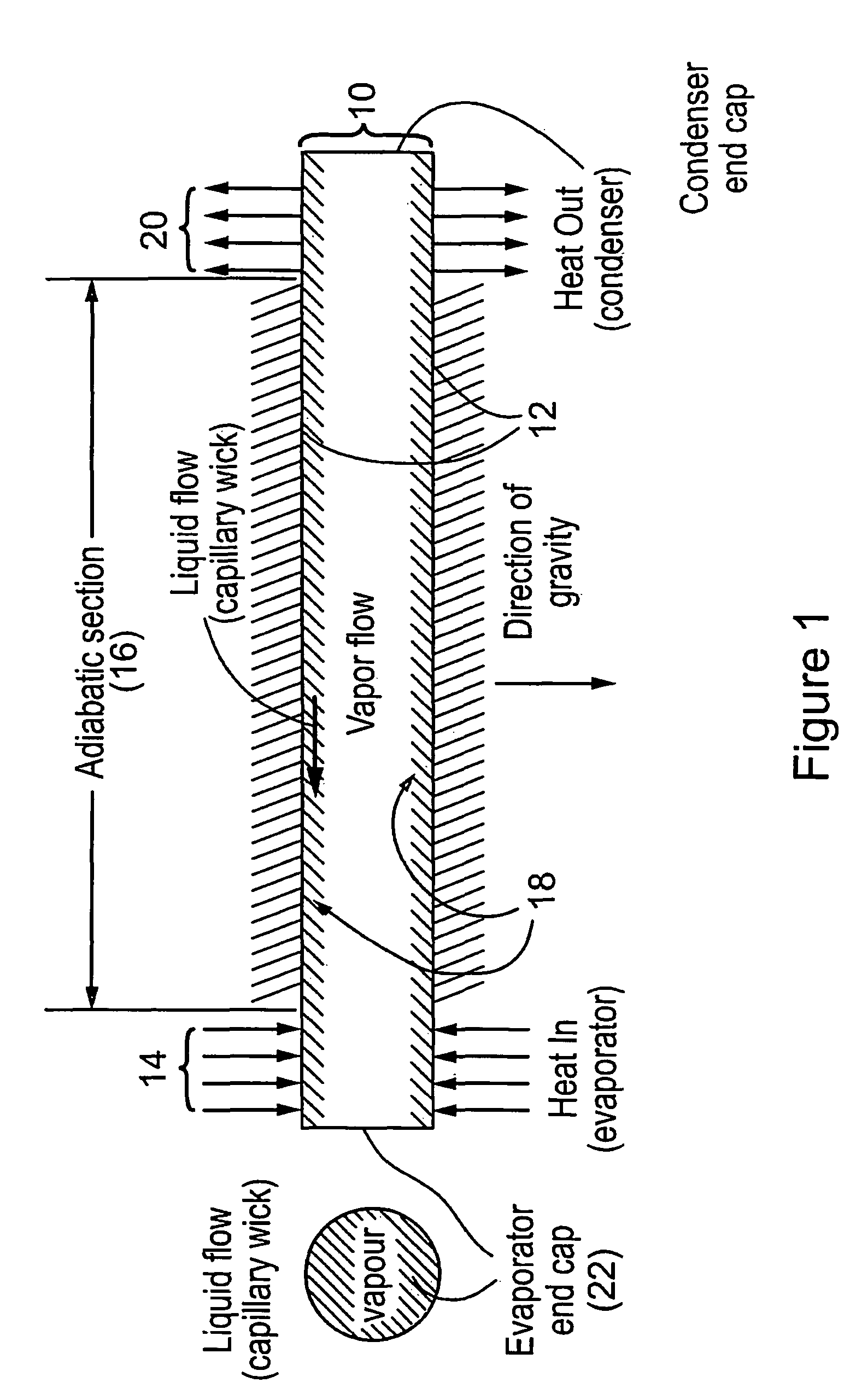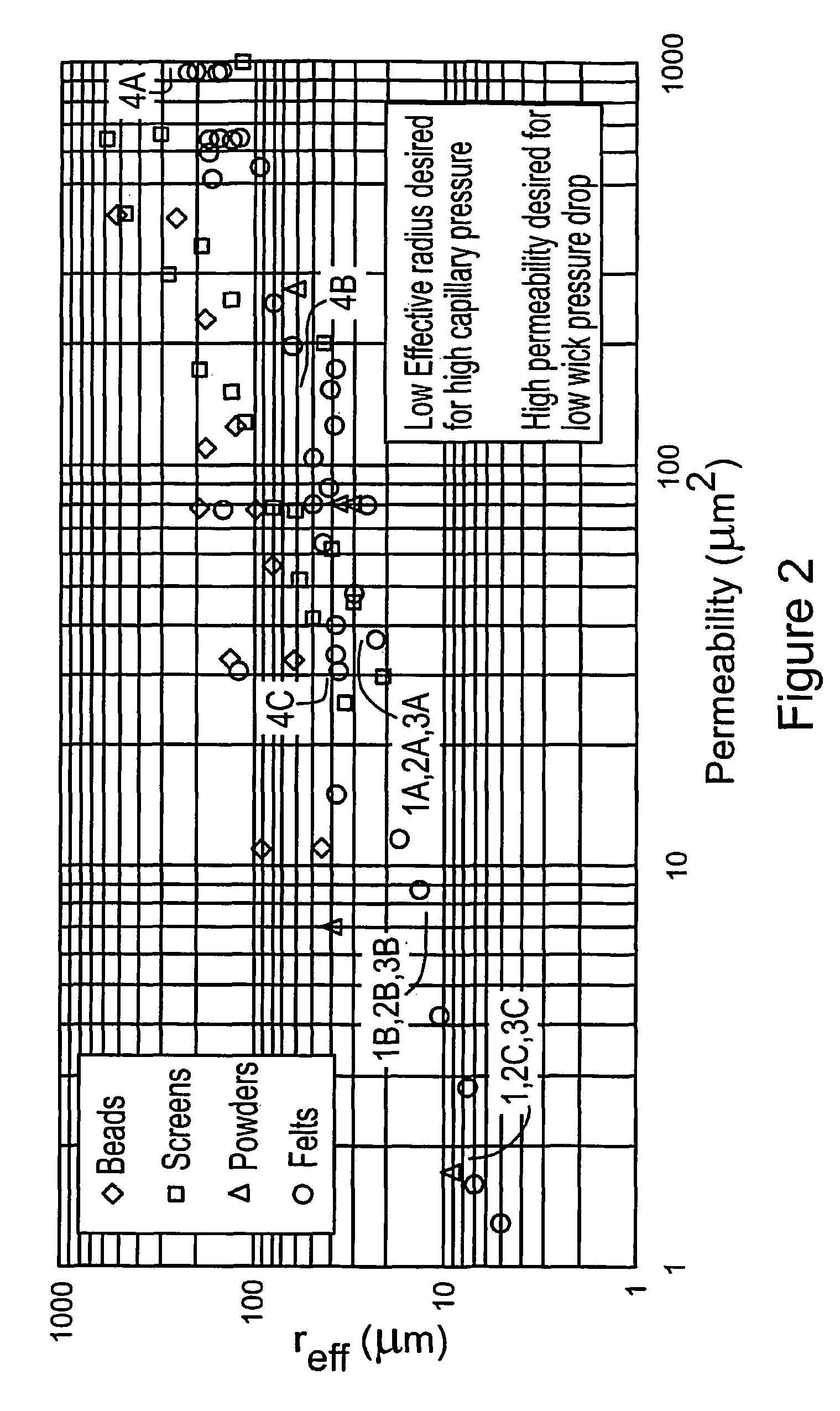Hybrid wicking materials for use in high performance heat pipes
a technology of wicking materials and heat pipes, applied in the direction of basic electric elements, lighting and heating apparatus, semiconductor devices, etc., can solve the problems of compromising between these characteristics, increasing capillary pressure, adversely affecting permeability, etc., and achieves high capillary pressure difference, high heat transfer performance, and optimized pore size distribution
- Summary
- Abstract
- Description
- Claims
- Application Information
AI Technical Summary
Benefits of technology
Problems solved by technology
Method used
Image
Examples
example 1
[0063]A nickel foam substrate with a characteristic pore size ranging from 300-500 μm was used. A filamentary or globular Ni power was applied to the Ni foam substructure. Experimentation with different binders, binder consistency and slurry application techniques was performed to achieve an optimum microstructure. It will be appreciated that different application techniques may be used including painting, coating, spraying or immersing the substrate within the slurry mix or dry powder. Sintering can be performed in a protective atmosphere, a vacuum or a hydrogen environment. Sintering time varies from approximately 10 minutes to 3 hours while the temperature varies from 700 to 1100° C. Through the nickel powder sintering process, fine pores are formed on the foam cell walls while the large pores present in the original Ni foam remain largely unobstructed as illustrated in FIG. 6. The smaller pore size formed is in the range of 0.5 micron to a few tens of microns and depended on the...
example 2
[0064]In this example a copper powder was sintered onto a copper mesh. Experimentation with different binders, binder consistency and slurry application techniques was performed to achieve an optimum microstructure. It will be appreciated that different application techniques may be used including painting, coating, spraying or immersing the substrate within the slurry mix or dry powder. Sintering was performed in a vacuum environment. Sintering time varies from approximately 40 minutes to 3 hours while the temperature varies from 700 to 1000° C. The resulted copper based bi-modal structure is used in heat pipe testing. Example 3 details the heat pipe testing results. The method described in the example is also advantageous for use in miniature copper-based heat pipes, since a very thin layer of copper wick can be produced for easy insertion into the container. It also offers a simplified method of manufacturing miniature heat pipes with sintered structures where the copper mesh ser...
example 3
[0066]FIG. 7 presents the effective thermal conductivity of the sintered copper based hybrid nickel wick structure tested under against gravity condition. Improved performance of a uniform copper based hybrid wick structure (evaporator, adiabatic and condenser sections all contain the same hybrid structure) over a monolithic copper mesh wick was observed exhibiting a twofold increase in effective thermal conductivity at 10 W power input.
[0067]Radial variation of the hybrid wick structure, particularly with larger concentration of small pores in the area adjacent to the vapor core, results in a threefold increase in effective thermal conductivity. The improvement is less pronounced when the larger concentration of smaller porous structure is placed against heat pipe container wall. This behaviour is a further evidence of the importance in the ability to tailor the wick according to its location within a heat pipe.
PUM
| Property | Measurement | Unit |
|---|---|---|
| sizes | aaaaa | aaaaa |
| sizes | aaaaa | aaaaa |
| size | aaaaa | aaaaa |
Abstract
Description
Claims
Application Information
 Login to View More
Login to View More - R&D
- Intellectual Property
- Life Sciences
- Materials
- Tech Scout
- Unparalleled Data Quality
- Higher Quality Content
- 60% Fewer Hallucinations
Browse by: Latest US Patents, China's latest patents, Technical Efficacy Thesaurus, Application Domain, Technology Topic, Popular Technical Reports.
© 2025 PatSnap. All rights reserved.Legal|Privacy policy|Modern Slavery Act Transparency Statement|Sitemap|About US| Contact US: help@patsnap.com



